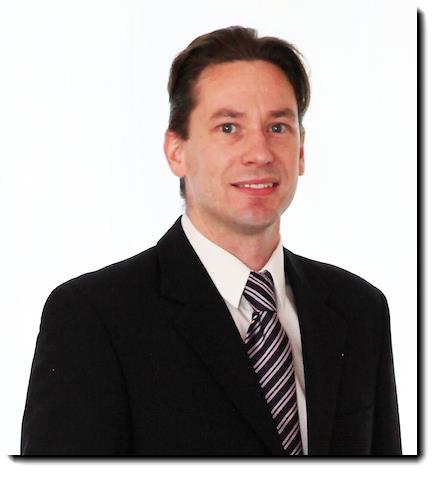 I was recently able to track down Pasi Havia a friend and quantitative fund manager for this short interview.
I was recently able to track down Pasi Havia a friend and quantitative fund manager for this short interview.
I am sure you will find it as insightful as I did.
Pasi how did you get started in investing?
Pasi Havia: I did my first investment in 1998 when I participated in Sonera’s IPO (dominant telephone company and mobile network operator in Sweden and Finland) in Finland. My father was working for the company and he was investing in the IPO as well.
I was still studying at the time so it was big money for me to invest.
After that I participated in other tech IPOs as well. This was the beginning of the tech bubble. IPOs were guaranteed way of making money.
A few years later I got a real lesson from the markets that put my legs back to the ground. But that’s how it all got started.
Describe your investment approach and how it has developed over time?
Pasi Havia: I’m strictly a quant person. It’s all probably because of my long engineering background. I like to play with number crunching, big data, software etc. This is my way of finding something useful out of chaos and randomness.
That said my investment approach is based on a different quantitative criteria that I’ve been able to back-test to work in a long run.
My strategy exploits small-cap and value anomalies that have been studied by many academics and proven to work well. I quantify these academics’ findings and combine them in my investment strategy.
The small-cap and value investing principles have actually always been part of my quant strategy. In the past few years I’ve been looking and adding different risk measurement criteria to my approach. These include for example bankrupt probability estimation and the probability of the company to cook their numbers.
I’m convinced that keeping emotions out of the investment process is one of the best ways for investors to enhance their returns. A quantitative approach to investing enables this and minimizes the speculation that investors usually do which is harmful to them.
Behavioural finance explains well why we have certain biases and using a quantitative approach enables me to bypass many of those.
How do you see quantitative value investing compared to value investing (or stock-picking)?
Pasi Havia: Traditional value investing includes qualitative criteria that naturally aren’t present in the quantitative approach as they can’t be quantified. These include for example assessment of the management of the company.
I’d say that quantitative value investing is very disciplined value investing. You don’t necessarily forecast anything but rely only on the hard facts (numbers).
Stock pickers many times try to evaluate the stock’s value based on its future outcome.
With quantitative value investing you know that there’s no certainty about the future but at the same time you know that building a portfolio with certain characteristics there is a tendency for certain outcomes (for example small company getting bought by its bigger competitor).
It’s all about probabilities.
To cut it short it all boils down to qualitative criteria that are absent in the quantitative value investing.
Click here to find companies that EXACTLY fit your investment strategy
You've invested as a private investor and now as a fund manager. What are the main differences?
Pasi Havia: Probably the biggest difference is time. When I was a private investor I always had limited time to devote to investing. Now I can finally focus totally into something that I love passionately.
The tools that I use as a fund manager are more solid. For example Bloomberg terminal is out of reach for many private investors because of its hefty price tag.
Then there is of course the responsibility.
As a private investor you are responsible only for yourself. As a fund manager I’m responsible for hundreds of others including regulators.
The fund itself has also limits set by Finnish Financial Supervisory Authority. The two biggest investments in the fund can’t exceed 20% weight and others 10%.
Private investors don’t have any limits on their portfolios and they can operate as they please.
Describe your investment philosophy as well as that of the fund you manage?
Pasi Havia: My investment philosophy is exactly the same as in the fund that I manage. That’s why I’m also invested in the HCP Quant fund. I’m one of the biggest owners of the fund.
HCP Quant fund invests globally in emerging markets as well as in developed markets, in small and midsize companies. It selects the best stocks from tens of thousands of companies, investing in companies that are undervalued simultaneously based on several different quantitative measures.
The cornerstone of my investment philosophy is small- and mid-cap stocks combined with value investing using a quantitative approach. So it’s basically a quantitative value investment strategy.
I do this to get rid of my psychological biases as they usually impair the profits of a investor.
How do you typically find ideas and what is your selection process before an idea gets added to the portfolio?
Pasi Havia: The process itself is very simple. I’ve set up my strict quantitative criteria into a Bloomberg terminal and that actually does all the “hard work” for me. But to get to that point is much harder as you need to understand why you enter certain criteria and how the overall portfolio behaves when using them in a selection process.
So the Bloomberg terminal spits out the list of companies that fulfill my criteria in any given time that I run it.
After that I do some background “sanity” checking.
For example I check that there haven’t been any one-off a kind of event in profits that is unusual for the company’s operations. I also do cross checking with other services that have access to quality fundamental data but have a different data source than Bloomberg such as www.quant-investing.com.
What are your ideas concerning portfolio composition and the value of individual holdings in relation to the portfolio?
Pasi Havia: I’m an advocate of a concentrated portfolio. Large diversification leads to index like results.
I want to get results that differ from indices.
The only way to get abnormal results is to do things differently. This naturally leads to concentrated portfolio and portfolio characteristics that are very different from overall markets.
With concentrated portfolio it’s easier to differ from indices.
Now, with concentrated portfolio I mean a diversification between 15 and 40 stocks. That’s usually enough from a risk (volatility) perspective. If you add up more following all the companies gets really time consuming.
Portfolio risk doesn’t get much lower beyond this point either.
I also like the idea of an equal weighting.
This follows from my quantitative strategy. Using an equal weight of stocks in a portfolio you weight more smaller companies compared to traditional market-cap weighted indices. So you get more small-cap exposure.
Also, I have to admit that I can’t forecast which of the picked companies are going to be the best investments, no one can. So I give them equal weight. According to the portfolio statistics I know some of them will be “home runs” but it’s impossible to tell beforehand.
Click here to find companies that EXACTLY fit your investment strategy
Can you describe your top mistakes in investing and what you've learned from them?
Pasi Havia: Every investor makes mistakes and I’m no different.
The biggest mistakes I made occurred during the tech boom in the 2000s. I didn’t have any investment plan. I made my decisions depending on my emotions and it was all more thrill seeking behaviour than investing.
Of course it all ended badly and I burned all my hard earned money.
After that I started to educate myself rigorously. As emotions were one of my biggest problems I wanted to create a process where they didn’t have a place.
First I ended up doing monthly investments into ETF's.
No matter how markets did I made my monthly investments. When the financial crises hit I kept making my monthly contributions even the situation seemed really worrying.
As we all know that dooms day didn’t come and markets bounced back. I did make some nice money because of the process that I used.
At the time I also started blogging about investing and my path towards a financial independence.
I kept educating myself by reading tons of books, academic papers, studying finance at university etc.
I had worked over a decade writing software so I’m rather good at analyzing data. So when I stumbled into a value investing I wanted to quantify it so I could make a replicable process out of it.
That’s how I ended up with a quantitative investment process.
It all started from my early mistakes where I didn’t have any investment plan and emotions were involved.
The money I burned then has come back multiple of times so it was all worth it even at the time I felt otherwise.
How concentrated is your portfolio? Do you follow any key risk-management guidelines in managing your portfolio?
Pasi Havia: HCP Quant diversifies to 15-40 stocks at this time. I do have risk-management guidelines in place. I have tools to measure company’s bankruptcy risk as well as their probability of cooking the books.
On top of that I also use a stop-loss. I want to cut losses and let profits run. Not all companies that get into a portfolio deliver good results.
That’s just part of investing.
HCP Quant doesn’t use any leverage, derivatives or do short selling. It’s a long-only equity fund.
You're based in Finland far from the markets is this an advantage?
Pasi Havia: Of course we have a stock market here as well, Helsinki Stock Exchange.
We have the same problem with most of the investors that I think is present in every part of the world. They invest in their domestic markets and mostly ignore international investing. So the typical Finnish private investor invest in just Finnish stocks, unfortunately.
I invest globally.
There’s no good reason to limit yourself to just your domestic market. From investing point of view I think that being far from most of the markets is a good thing as I can form my independent view easier.
On the other hand internet nowadays brings markets to living room no matter where you live. So it doesn’t matter as much as it used to. As a quant investor the location where I live is irrelevant as investment decision is based on an investment model.
Any suggestions for visitors to Finland?
Pasi Havia: The best time to visit Finland is summer. There’s always some pretty crazy events going on, like Swamp Soccer World Championships or Wife Carrying World Championships.
Finland is also the home of Santa Claus and he lives in Arctic Circle, Rovaniemi.
The northern part of Finland, Lapland, has many ski resorts and is good place to visit in winter.
If you are lucky you might see aurora borealis as well. Just remember to bring enough warm clothes with you!
Anything else you would like to mention?
Pasi Havia: HCP Quant fund is open for investors living abroad.
More information regarding the fund and subscription can be found on the Helsinki Capital Partners’ website.
I wish you and all fellow quant investors profitable investing!
Click here to find companies that EXACTLY fit your investment strategy


